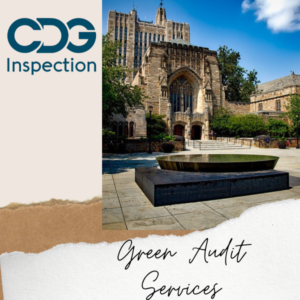1. Introduction:
In an era where environmental concerns take center stage, educational institutions play a pivotal role in championing sustainable practices and fostering ecologically conscious education. NAAC (National Assessment and Accreditation Council) accreditation serves as a benchmark for colleges and universities to showcase their dedication to delivering quality education and pursuing continuous improvement. Green Audits have emerged as a pathway to achieving both ecologically conscious education and NAAC accreditation. In this blog post, we delve into the significance of Green Audits in promoting sustainable practices, instilling environmental awareness, and propelling colleges toward NAAC accreditation.
2. Green Audits:
2.1. A Comprehensive Overview:
Green Audits encompass comprehensive assessments that evaluate an institution’s environmental impact, sustainability practices, and policies. These audits cover diverse aspects, ranging from energy consumption, waste management, and water usage to transportation and ecological footprint. By conducting Green Audits, colleges, and universities gain a holistic understanding of their sustainability endeavors and identify areas primed for improvement.
2.2. Embracing Ecologically Conscious Education:
Ecologically conscious education revolves around integrating sustainable practices and environmental consciousness into the curriculum, enabling students to evolve as responsible global citizens. Green Audits contribute to this pursuit by:
a. Curriculum Integration: Green Audits shed light on an institution’s sustainability initiatives, enabling colleges to incorporate relevant subjects and practices into their curriculum. This integration equips students with the knowledge and skills required to address environmental challenges and formulate sustainable solutions.
b. Experiential Learning: Green Audits present students with opportunities for active involvement in sustainability initiatives. They can engage in data collection, analysis, and the implementation of sustainable projects, fostering experiential learning and cultivating a sense of responsibility toward the environment.
c. Campus-wide Engagement: Green Audits involve the entire campus community, encompassing students, faculty, and staff. This cultivates a culture of environmental consciousness and collaboration, fostering an inclusive environment where sustainable practices are embraced and celebrated.
2.3. Green Audits and NAAC Accreditation:
Green Audits closely align with the criteria for NAAC accreditation, making them an indispensable component of the accreditation process. Here’s how Green Audits support colleges in achieving NAAC accreditation:
a. Criterion 7: NAAC accreditation incorporates Criterion 7, which emphasizes institutional values and best practices. Green Audits allow colleges to showcase their commitment to sustainable practices, community engagement, and environmental awareness, aligning seamlessly with the accreditation criteria.
b. Documentation and Evidence: Green Audits provide tangible evidence of an institution’s progress in sustainability efforts. This documentation bolsters the college’s case for NAAC accreditation by showcasing its dedication to continuous improvement and sustainable development.
c. Infrastructure Enhancement: Green Audits evaluate an institution’s infrastructure and identify areas with potential for enhancement. By incorporating sustainable infrastructure upgrades, such as energy-efficient systems, renewable energy sources, and eco-friendly buildings, colleges elevate their overall sustainability profile and meet accreditation standards.
2.4. Beyond NAAC Accreditation:
Green Audits yield additional advantages that extend beyond NAAC accreditation, including:
a. Resource Optimization: Green Audits enable colleges to identify opportunities for resource optimization, encompassing energy conservation, waste reduction, and water efficiency. This translates into cost savings, operational efficiency, and a reduced ecological footprint.
b. Community Engagement: Green Audits foster collaboration with local communities, forging partnerships for sustainable initiatives. This engagement enhances the college’s reputation, strengthens community ties, and promotes environmental stewardship beyond the campus.
c. Student Engagement and Empowerment: Green Audits empower students to actively participate in sustainability efforts. By engaging in audits and sustainable projects, students develop leadership skills, critical thinking abilities, and a deeper understanding of their role in shaping a more sustainable future.
Conclusion:
Green Audits serve as a pathway to ecologically conscious education and NAAC accreditation, offering colleges and universities a roadmap toward sustainability and environmental consciousness. By integrating sustainable practices into the curriculum, engaging the campus community, and aligning with NAAC accreditation criteria, institutions cultivate a culture of environmental responsibility and elevate their overall performance. Beyond accreditation, Green Audits contribute to resource optimization, community engagement, and student empowerment. Let us embrace Green Audits as a transformative tool that propels us toward a future where ecologically conscious education and sustainability intertwine harmoniously.


